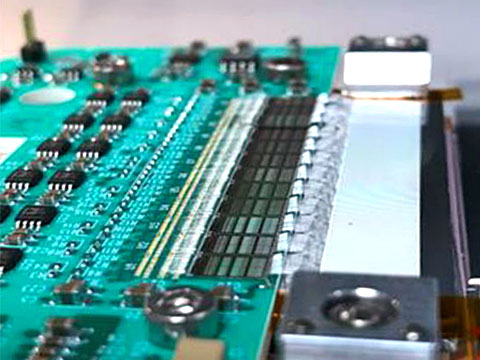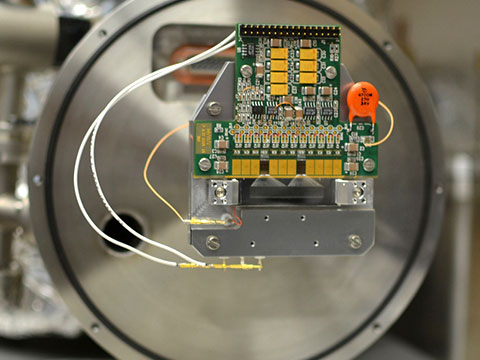Sensors
Germanium Detectors
With the highest energy resolution among compound semiconductors, germanium (Ge) is the material of choice for the detection of high-energy x-ray and gamma rays in photon science and other fields. With a dedicated cleanroom for Ge wafer processing, the Instrumentation Department develops Ge detectors with reasonable depletion voltages and excellent charge collection efficiency.
Our Capabilities
- Fabrication of patterned strip and pad array Ge detectors
- Design of Ge detector systems, including device simulations, with commercial software
- Integration of detectors in operational conditions
- Evaluation of wafers up to four inches in diameter in liquid nitrogen and small samples (2 cm × 1 cm) down to 10 K
- Assessment of full systems in cryogenic environments for high-power (up to 60 W) operational requirements
- Production of reliable ohmic contacts with lithium-doped Ge or silicon sensors
- Development of metal-based n-type contacts for thin-entrance-window applications
- Application of cleanroom equipment to process precious and nonconventional metals, which are required for under bump metallization for bonding
Case Studies
X-ray Powder Diffraction

A 384-element Ge detector wire bonded to 12 MARS application-specific integrated circuits.
We developed 384-element Ge strip detectors (125 microns) for experiments at the X-ray Powder Diffraction beamline of Brookhaven’s National Synchrotron Light Source II (NSLS-II). The energy-resolving capability of these detectors enables the suppression of fluorescence and undesired scattering, which typically degrade diffraction patterns. Furthermore, the multi-amplifier readout system (MARS) chip used in the detector system can time tag incoming photons, making it possible to collect time-resolved diffraction measurements capturing phase transitions and other dynamic events in materials.
Energy-dispersive X-ray Diffraction

A 64-element Ge strip detector for EDX diffraction.
Unlike conventional x-ray diffraction, which uses a monochromatic beam, energy-dispersive x-ray (EDX) diffraction uses a white beam and relies on the spectroscopic capability of the detector system. For EDX experiments at Argonne’s Advanced Photon Source (APS), we developed a 64-element Ge strip detector. By raster scanning the beam, scientists can obtain tomographic slices of samples with this detector.




